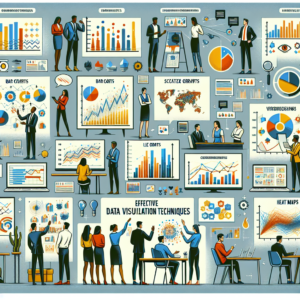Introduction
E-learning has come a long way since its inception, transforming the landscape of education and professional development. As we step into 2024, it’s essential to reflect on how e-learning has evolved and where it’s heading. This article delves into the insights and trends shaping the future of e-learning.
The Rise of E-Learning
E-learning, or electronic learning, emerged in the late 20th century with the advent of the internet. It offered a convenient and cost-effective way to access educational content online. Initially, e-learning was limited to basic text-based courses. However, as technology advanced, so did online education platforms, offering a wide array of multimedia content, interactive simulations, and real-time assessments.
Personalized Learning
One significant development in e-learning is personalized learning. This approach tailors educational content to individual learners, taking into account their preferences, progress, and learning styles. Artificial intelligence (AI) plays a pivotal role in personalized learning, analyzing data to create customized learning paths. This shift from one-size-fits-all to personalized learning enhances engagement and knowledge retention.
Accessibility and Inclusivity
E-learning has made education more accessible and inclusive. Learners from diverse backgrounds and geographical locations can access courses and resources. It’s a powerful tool for addressing the educational divide and ensuring that knowledge is available to all, regardless of physical location or disability.
Microlearning and Just-in-Time Training
In today’s fast-paced world, learners seek quick, bite-sized pieces of information. Microlearning has gained popularity, offering short, focused modules that address specific learning objectives. Additionally, just-in-time training provides immediate access to information when needed, promoting continuous learning in the workplace.
Virtual Reality and Augmented Reality
Emerging technologies like virtual reality (VR) and augmented reality (AR) are revolutionizing e-learning. VR immerses learners in a simulated environment, enhancing experiential learning. AR overlays digital information on the real world, offering interactive and engaging learning experiences.

This image was generated using the Discord AI platform.
The Role of AI and Data Analytics
AI and data analytics have transformed e-learning by providing insights into learner behavior and performance. Educators can use this data to adapt content, identify areas needing improvement, and predict future learning needs. AI-driven chatbots also offer instant support to learners.
The Future of E-Learning
As we look ahead, the future of e-learning appears exciting. AI will continue to play a central role in creating adaptive and personalized learning experiences. Gamification, using game elements in education, will make learning more engaging. Blockchain technology may enhance credential verification and reduce fraud in online certifications.
Conclusion
E-learning has come a long way, evolving into a dynamic and accessible mode of education. With personalized learning, augmented reality, and AI-driven insights, the future promises even more engaging and effective learning experiences. As technology advances, the possibilities for e-learning are limitless, shaping the education and professional development landscape for years to come.
If you wish to start online courses check out E-learn.guide article about how to find the right online course for you.
Udemy, Coursera, Linkedin Learning and edX are the top online education platforms that we recommend to work with.











